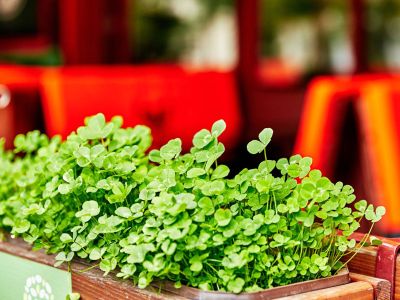Growing Clover Indoors
It is important that you give your indoor clover the sunniest window that you have. This is necessary for best growth and flowering. If your window is not sunny enough, you will find that the stems will become weak and more stretched out, and the leaves will be smaller. Being attentive to watering is another very important task in order to have thriving potted clover plants indoors. Clover likes to be kept evenly moist. Be sure to use a well-draining potting mix. Water thoroughly until it runs from the drainage hole, and then discard the excess water. Don’t let the soil completely dry out. Use an all-purpose fertilizer throughout the growing season and follow the directions on the label for the best results. One thing to make note of is that clover sends out stolons or runners that take root and form more plants. If you see any runners that spill over the edge of the pot, these will eventually die if they can’t root. You can try and redirect these back into the pot to take root if your container has room. Or you can set a pot of soil next to the plant and lay the runners on top of the soil. These will eventually root and you can then cut the runner off the original plant. Now you have another potted clover you can keep or give away. Lastly, you should give your clover a rest period. If your plant starts to look tired and weak, most likely by winter time, stop watering your plant. Just neglect it until all the leaves yellow and set it in a cool, dark location for a few weeks. Keep an eye on it because you will start seeing new growth at some point. Once this happens, clean up all the dead foliage, return your indoor clover back to its sunny window, and resume watering and fertilizing. It will flush out with beautiful, new growth and start the cycle all over again!
